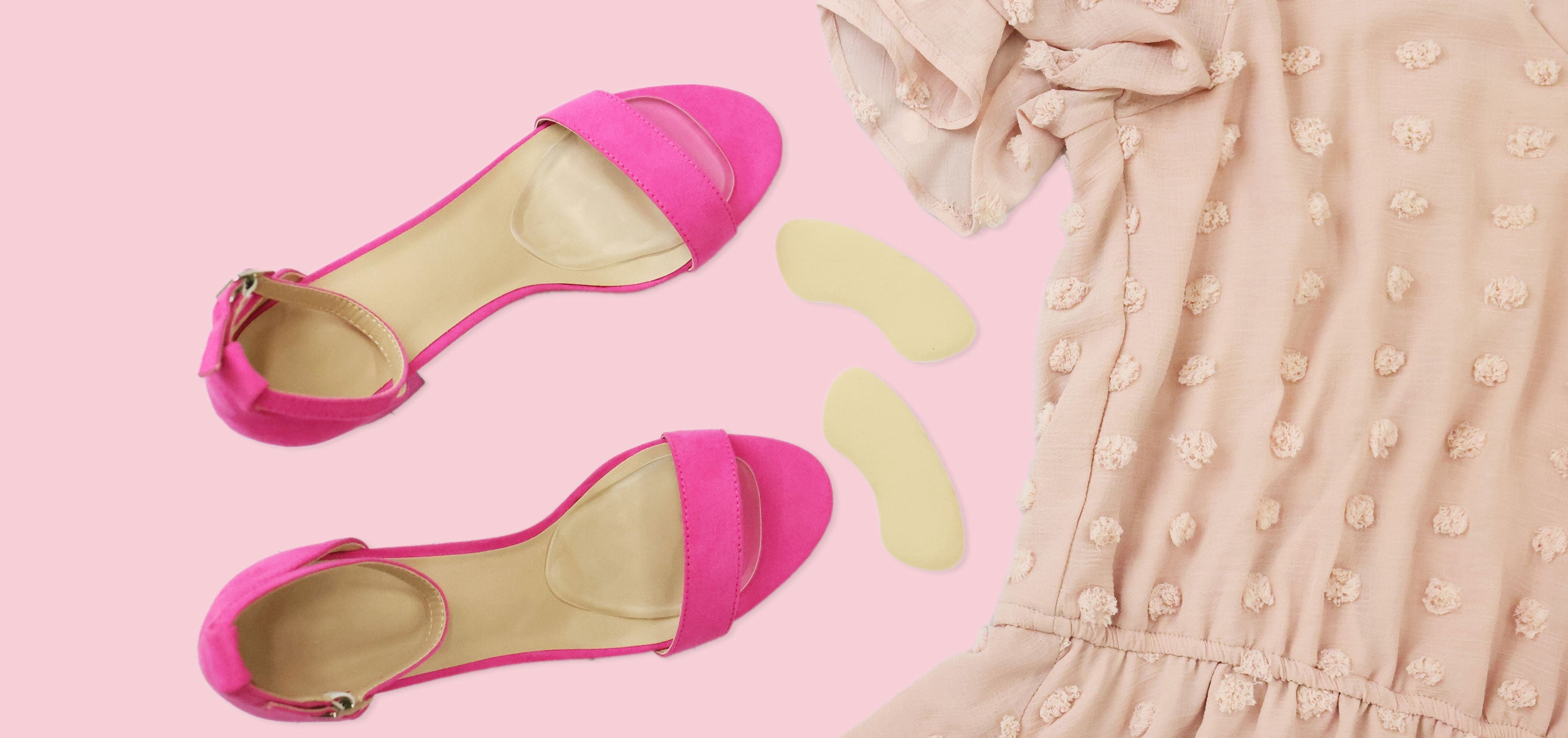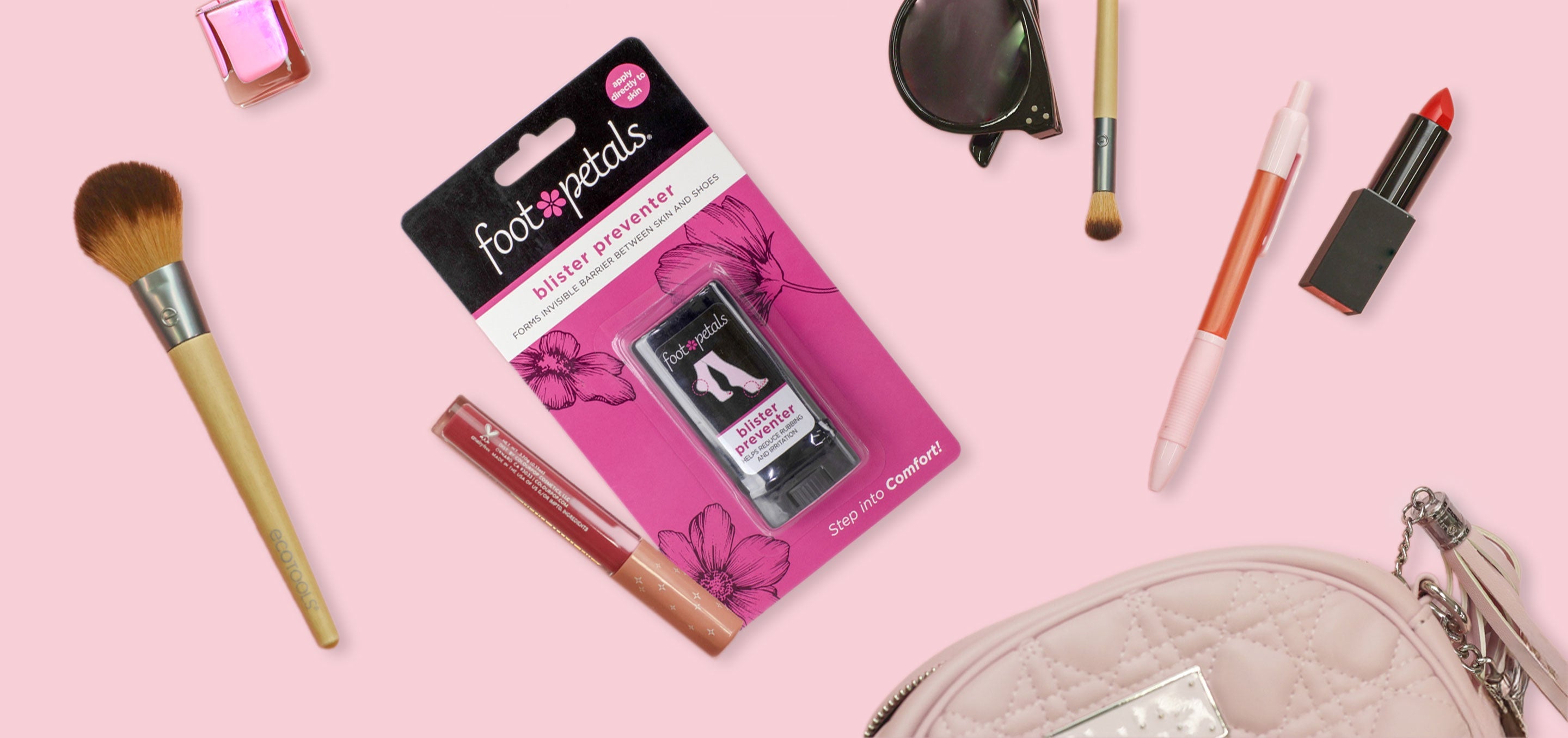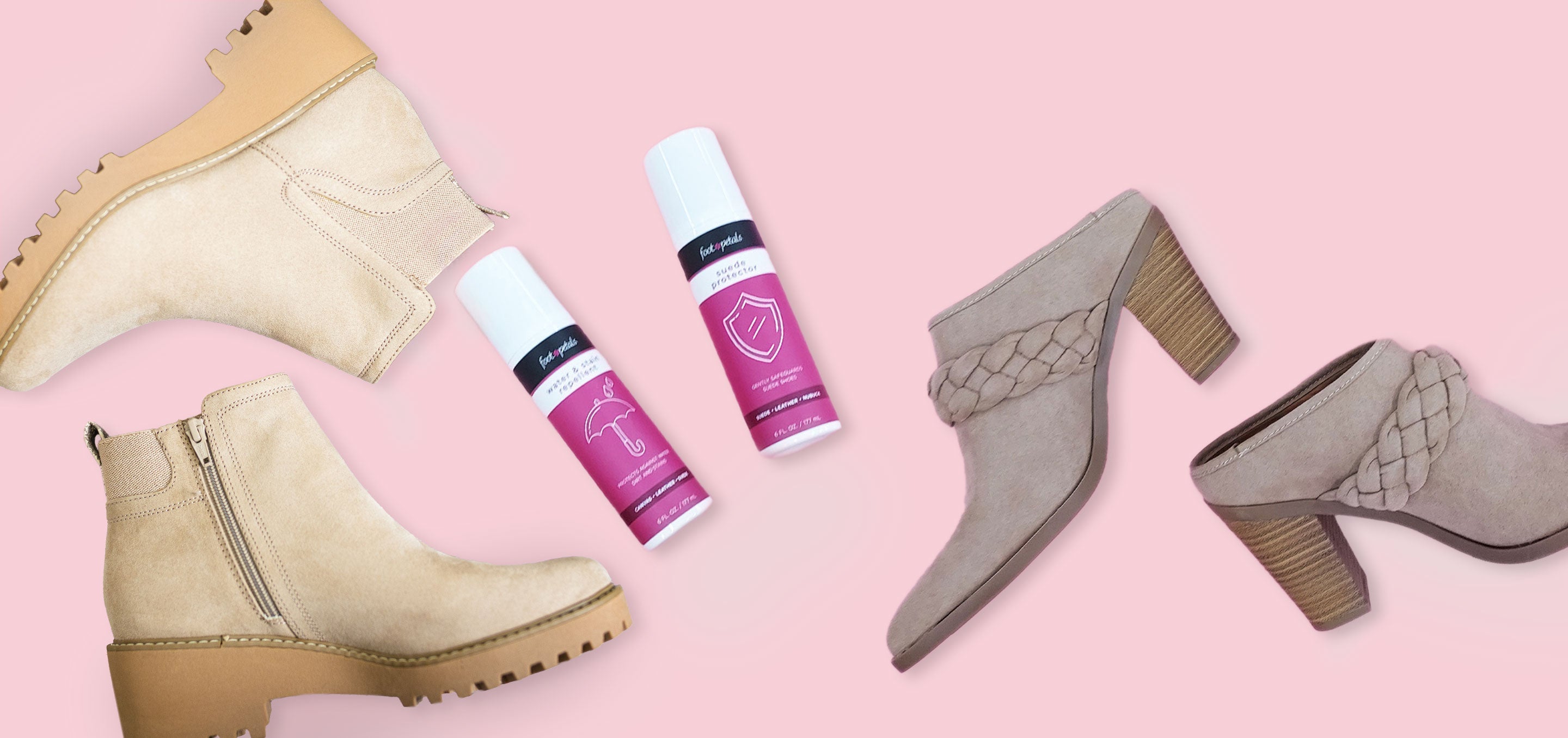What is Vanity Sizing?

Why Clothing Sizes Are Different from Brand to Brand
Have you ever bought clothes without trying them on and they didn’t fit despite the size on the tag being right? If yes, then you’ve been a victim of vanity sizing. Vanity sizing happens when a brand labels clothing with sizes that are smaller than the actual size.
Because woman often make decisions based on numbers, like losing weight to fit into a goal pair of jeans or buying the same size shoes even if they don't fit, inconsistent clothing sizes make shopping frustrating and negatively affect our self-esteem.
By understanding why clothing sizes are so inconsistent, women can feel better about wearing clothes and shoes made for their unique bodies. Foot Petals® shoe cushions help you feel confident wearing what you want by making your shoes fit and feel comfier.
In This Article:
- What is vanity sizing?
- Does vanity sizing apply to shoes?
- What makes women’s clothing sizes so different?
- How to shop different clothing sizes for women.

Vanity Sizing & Women’s Clothing
Go to your closet, grab three pairs of the same size pants from different brands and lay them on top of each other. Chances are the waist sizes on these pants don’t match. Clothing measurements can be up to three inches bigger than the size on the tag.
Though men experience it too, women’s clothing varies the most in sizing. You might wear a size 4 in one brand, but a size 10 in another. Even clothes in lettered sizes have little accuracy. Are clothing sizes getting smaller, or is the lack of true sizing in women’s clothing done on purpose?

Effects of Vanity Sizing
Vanity sizing means the practice of labeling clothes as smaller than they really are to make the customer feel better about wearing a “smaller” size. By making you feel good about wearing a size 4 when all the other brands you wear are a size 10, they hope to gain your loyalty and sell more.
The Journal of Consumer Psychology found smaller size labels boosted customer self-esteem while wearing larger sizes made customers feel less about themselves, despite the clothes being the exact same size. Besides making it hard to buy clothes, vanity sizing also preys on those struggling with body image issues and low self-esteem.
A 2012 study noted how women are just as likely to encounter larger sizes that don’t fit as they are smaller, vanity sizes due to the variation in brands. Research showed these larger sizes lowered customer self-esteem. They would often compensate using retail therapy, buying items without sizes like makeup or jewelry.
Not all brands participate in vanity sizing, but those who do often include low to middle end retailers, fast fashion, and online stores. If you have a hard time shopping for shoes online, this might be why.

Vanity Sizing & Shoes
Inconsistent shoe sizes have less to do with vanity sizing and more to do with a lack of standardization. Different size shoes vary by brand and style, available in different widths with different methods of measuring feet.
Just like our bodies are unique in shape and size, so are our feet. Like clothes, shoes have no universal sizing standard, but that doesn’t stop us from buying the wrong size.
How to Stop Wearing the Wrong Size Shoes
A 2017 study by the College of Podiatry in the UK and statistics from WorldMetrics.org reveal over half of women wear shoes that are too small. Wearing too small shoes is bad for your foot health, creating problems like bunions, plantar fasciitis or ball of foot pain.
Why women wear shoes that are too small is similar to some reasons why women wear high heels. Having small feet is said to make women more attractive, which helps explain foot binding in Chinese culture and how a life-size Barbie doll would stand 5’9” tall with a size 3 shoe. Wearing smaller shoes gives the illusion of smaller feet.

Often, we care more about fashion than we do fit, buying trendy platform heels or ballet flats over comfortable sneakers with arch supporting insoles. Uncomfortable shoes do more than cause foot pain, decreasing feelings of focus and empowerment.
For healthier feet and a boost of confidence, you can wear shoes that fit with Foot Petals shoe cushions. Adding a ¾ shoe insert to shoes that are two different sizes or a back of heel cushion to keep your feet from slipping out improves fit and makes shoes comfier, promoting confidence along the way.
The Reason Behind Inconsistent Women’s Clothing Sizes
In the 1940s, the American government set out to create a standardized sizing system for women’s clothing. The Works Projects Administration took measurements from 15,000 women, only reporting on low income, white women who were likely undernourished.
Those in charge of the project decided it would only work if clothing had a metric attached to it, like shoe sizes. Thus, they created sizes 8 through 42, an arbitrary number in which a size 8 would be a size 00 today.
This system quickly proved to be unreliable, receiving updates overtime, but was abandoned in the 1980s. Clothing manufacturers had to define clothing sizes on their own, and immediately began downsizing to make consumers feel better.
Today, clothing retailers realize the differences in women’s bodies, embracing curves with plus-size clothing or petite proportions. They still participate in vanity sizing by sizing their clothes by demographic and target markets, creating inconsistencies between brands.
Tips for Shopping Inconsistent Clothing & Shoe Sizes
Vanity sizing is an industry problem. It has nothing to do with women or our bodies. We must learn how to shop around it so we can still enjoy fashion trends and feel good about ourselves. Here are a few tips for shopping for different size shoes and clothes:
- Take Measurements. To find shoes and clothes that fit, always measure your foot length and width and your bust, waist, and hips. Keep these in your notes app on your phone and refer to them when you shop online or look at sizing charts.
- Use Shoe Cushions. When your shoes have an awkward fit, tight spaces, or they’re too big, shoe inserts like spot cushions, heel liners, and ball of foot cushions can help fill in gaps with discreet cushioning and make shoes fit better.
- Check Out Reviews. Previous buyers in a similar shoe size or body shape can tell you whether a garment is true-to-size, runs small or runs big. This insight can help you decide whether you need to size up or down.
- Try Before You Buy. Trying on shoes and clothes before you commit to buying them saves you from confusing or unjust return policies. You can better determine how accurate sizes really are and feel more confident in your purchase.

Remember, It’s Just a Number
In a world of fast fashion, vanity sizing, and shoes that are too small, it’s good to have a reliable way to achieve comfortable, confident style. There’s nothing wrong with buying clothes in different sizes because none of those sizes are realistic. Choose comfort and get your best fit with Foot Petals shoe cushions.
References:
Average Women Shoe Size Statistics. (2024, May 23). WorldMetrics.
Dooley, R. (2013, July 19). The Psychology Of Vanity Sizing. Forbes.
Hoegg, J., et all. (2014). The flip side of vanity sizing: How consumers respond to and compensate for larger than expected clothing sizes. Journal of Consumer Psychology, 24(1), 70–78. https://doi.org/10.1016/j.jcps.2013.07.003
Igneri, J. (2017, June 2) Size Matters: Why Fashion’s Vanity Sizing is Messing with Our Heads. Nylon.
Psychology Behind Wearing the Wrong Shoe Size. (2021, May 18) FitMyFoot.
Vanity Sizing: The Truth About Inconsistent Clothing Sizes. (2023, April 19). Soxy.
Why women’s clothing sizes don’t make sense. (2016, August 3). Vox.










